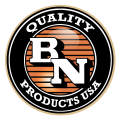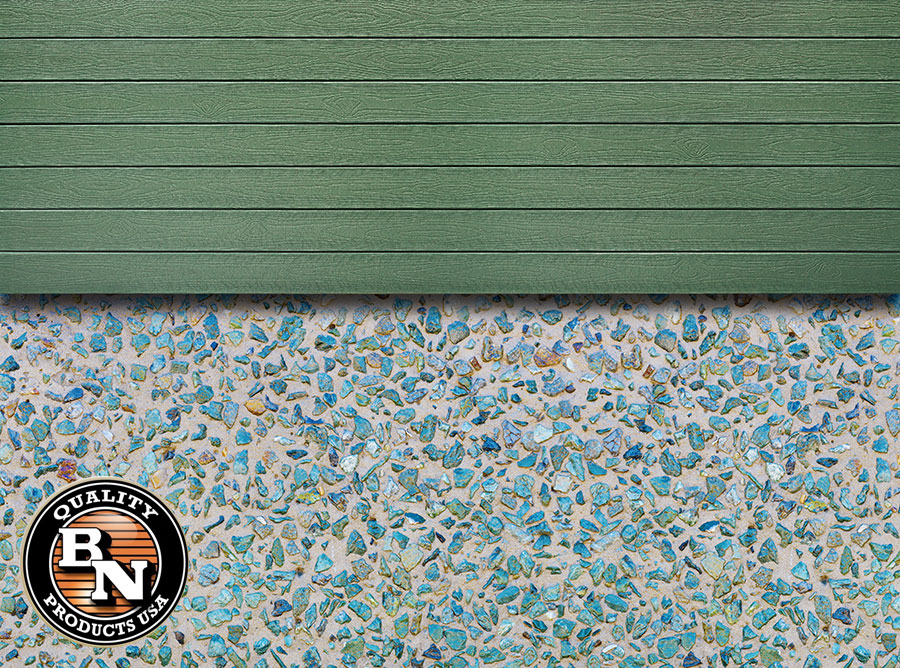The versatility, durability, and cost of concrete has made it the man-made material most widely used today. Concrete is made from Portland cement and water, which forms a thick slurry that forms tiny crystalline structures as it cures. Rocks and other stable materials get tossed into the blend while the mixing paddle drill spins, and these materials are known as aggregates. Modern concrete contractors use all sorts of aggregates to create unique effects in the finished surface.
The Importance of Aggregates
Aggregates lower the cost of concrete by taking up 60% or more of the total volume. Cement is very expensive, so using it as a binder around a cheaper material makes economic sense. However, the strengthening effect of the aggregate is far more important. Gravel is the most common material mixed into concrete because its hardness and durability makes the concrete much tougher. The aggregates also add texture and visual interest to the otherwise bland gray cement, which is where alternative materials come into play. When concrete is used decoratively for pathways, counter tops, and patios, the contractors can swap some strength for beauty by using unusual aggregates.
Marbles
Two different types of marble are available for decorative concrete. If you like the look of the classic cat’s eye glass marbles used as toys for generations, you’ll be happy to know they can work well as an aggregate. Crushed pieces of rock marble are much more common because of the numerous color and pattern options. Scattered chunks of marble in a concrete counter top offer the beauty of the stone without the high cost.
Recycled Glass
Dreaming of a colorful backyard patio? Consider tipping a bag of colored glass chunks into the blend on your mixing stand. While used bottles and jars can’t be used for this purpose, aggregate suppliers still use recycled material by buying waste leftover from the glass manufacturing process. This means you can find unusual colors like purple and red instead of getting stuck with just brown, green, and blue.
Seashells
Nothing gives a piece of decorative concrete a tropical look like seashells. While some people simply press them into the surface of the concrete before it sets, others choose to toss them into the mix as the aggregate. Polished pieces of broken shells work better as an aggregate due to their irregular edges. If you’re set on the look of whole seashells, you’re better off going with the surface method.
For an elegant look, consider tumbled pieces of Mother of Pearl. This material comes from the inside of shells formed by many mollusks. It has a shimmer and color changing effect that can’t be replicated by any other material, especially when exposed and polished on the surface of the concrete.
Rounded Stone
You can stick with stone and still get a different look by choosing rounded stones or pebbles. Also commonly called river rocks, these stones lend a lot of strength to the concrete without the same old look as angular gravel. They can also create a very comfortable walking surface that massages your bare feet as you stroll over it.
Mirrors
Since glass is a relatively stable aggregate material, some creative concrete experts stumbled across the idea of tossing broken mirrors into the mix. The best mirror aggregates feature reflective surfaces on both sides of the glass so it’s always shiny no matter which side is up when the concrete sets. While you won’t be able to see your face in your counter top, the shiny metallic look is quite attractive.
Exposed Aggregates
No matter what material you choose, you can make the concrete more decorative by brushing away the surface layer of concrete to expose the aggregate below. Depending on how much of the aggregate you expose, it’s easy to create a non-slip surface by adding a lot of texture. Contractors spray down the surface of newly poured concrete with a chemical that stops the top millimeters from setting, then come back and scrub off extra material to reveal a beautiful texture and pattern below.
Of course, all of these aggregate options blend wonderfully with other decorative concrete techniques like stamping, dyeing, staining, and etching. Let your creativity flow to build a concrete patio or counter top that stands out from what you can find in home improvement stores.



